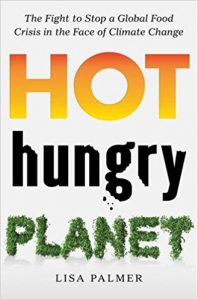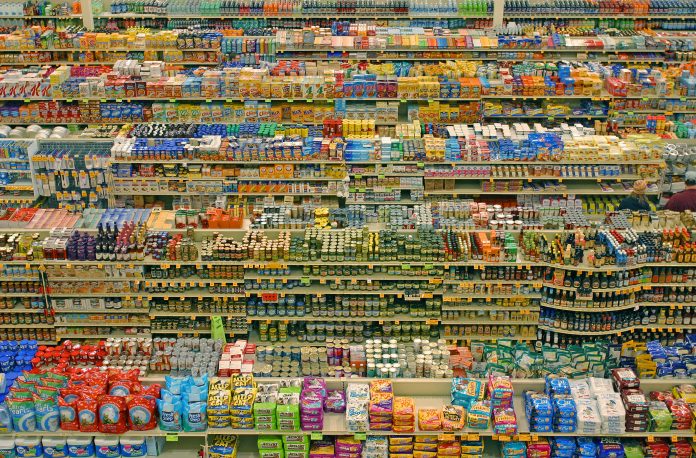(THIS ARTICLE IS MACHINE TRANSLATED by Google from Norwegian)
The number of people on earth is increasing, and prosperity growth means that more and more people want a better diet. The world thus needs more and more food, a challenge that we have managed to meet because technology development has provided increasingly efficient ways to utilize resources. Today there is enough food in the world for everyone, we just are not good enough to distribute it. However, under this surface of intensive food production, the over-consumption of resources and changes in the natural environment threatens to send us into serious food crises. The critical question is: How do we relate to this?
Robustness and customization. This is the starting point for Lisa Palmer's book Hot, Hungry Planet. The Fight to Stop a Global Food Crisis in the Face of Climate Change. In Palmer's history, the solution lies neither in monocultural economies nor in one-dimensional investment in small-scale local food production. Instead, she assumes that the challenges are varied and complex, and that we therefore need varied solutions. The overall goal should be to develop a global food system that is resilient – that is, robust and resilient, and therefore resistant to crises – and ecologically sustainable.
All food production requires human intervention in and utilization of natural resources. In addition, the food system as a whole is not only about food production, but also about processing, sales and consumption. All elements must be included, and for each sequence we include, a number of new factors are added and thus increased complexity. To meet this complexity, we need different forms of knowledge, both in each area and across different fields.
 Optimistic angle. Palmer is a journalist, and the book is shaped by stories of people, organizations and states that are looking for better solutions. We are presented to young women in Africa who, through education programs, have learned to make better use of limited resources, and thus have become resourceful leaders for positive social development. We meet farmers in South America who have developed new and better ways to utilize the land so that food production increases while improving the natural environment. Introduced to climate-smart villages in India, we can read that efforts are being made to find solutions that can meet the increased demand for palm oil without destroying more rainforest. We are led into the complex field where new and more robust food types and forms of food production are being developed, with or without gene manipulation. We learn about the complex interplay between degradation of the natural environment, reduced fishing resources and unfortunate social mechanisms, and how it works consciously to better see the population, health and environment in context.
Optimistic angle. Palmer is a journalist, and the book is shaped by stories of people, organizations and states that are looking for better solutions. We are presented to young women in Africa who, through education programs, have learned to make better use of limited resources, and thus have become resourceful leaders for positive social development. We meet farmers in South America who have developed new and better ways to utilize the land so that food production increases while improving the natural environment. Introduced to climate-smart villages in India, we can read that efforts are being made to find solutions that can meet the increased demand for palm oil without destroying more rainforest. We are led into the complex field where new and more robust food types and forms of food production are being developed, with or without gene manipulation. We learn about the complex interplay between degradation of the natural environment, reduced fishing resources and unfortunate social mechanisms, and how it works consciously to better see the population, health and environment in context.
All of these stories have a common core. On the one hand, it is about a climate and a natural environment in imbalance, and thus about the danger of both local and global food crisis. On the other hand, we face a socially liberal development optimism, rooted in the interaction between individuals with the power to shape new solutions, the political will to lead developments in better directions, and the existence of economic incentives that stimulate the choice of the solutions that will give the most return. time. This positively charged production may be problematic, but at the same time it is easy to feel that it is needed. Not least in view of the fact that politicians and other leaders should see that there are more strategies than one-sided investment in monocultural big production.
Syria is seen as an illustration of how water loss can create shock effects, trigger conflicts, and potentially cause entire societal formations to disintegrate.
The role of water. One of the book's chapters deals with the problem of water. California and Syria are used as examples here, because both rely on groundwater pumping, which has created a ticking bomb during food production. Syria is seen as an illustration of how water loss can create shock effects, trigger conflicts and potentially disintegrate entire societies. The problem is not just about drought, but also about the inability (or will) to control water consumption. The critical question is whether the same thing can happen in California, or elsewhere on the planet. Do we underestimate the explosive danger inherent in environmental changes? The global food system is subject to increasing pressure from drought, floods, extreme heat and forest fires.
In today's world, an increasingly extensive global trade in food is being practiced. A virtue of necessity, but at the same time a source of new challenges. How often do we think about the countries that export a lot of food, so at the same time emit huge amounts of water? Linda Palmer also highlights this – but a bigger problem is that the intensive trade tempts local food producers to push up production through increasing use of monocultural cultivation, pesticides, artificial irrigation and engineered seed. The combination of the handles that are used often increases production in the short term, but undermines sustainability in the long term.
The multi-spectrum – and one-sided. The future needs different strategies. These can be about raising awareness of the value of diversity rather than one-sidedness, and establishing better practices to guide development in a sustainable direction. More integrated approaches, where different factors are seen in context and food production takes place in interaction with rather than against nature, is what it takes to ensure a balanced, sustainable food system.
Hot, Hungry Planet contains a wide range of themes. The book is characterized by good and bad because Palmer is a journalist and not a researcher. The narratives are often produced somewhat irresistibly, where the author's interpretations and opinions are promoted as if they were unequivocally true. For example, she says that GMOs should not meet with blind resistance or enthusiastic tribute. We have to go into every variation of gene manipulation and pragmatic trade-offs and minuses. It is tempting to agree with this, but the stance would have gained more power if Palmer made more visible how those who do not share this view think.
The frictionless writing style goes back to the examples of individuals or organizations that have achieved success. Is it a given that the concepts described have been / are unequivocally good, in the past, present and future? How do we know that the cases Palmer points to are representative? Could it be that she presents us with the exceptions, while the pattern is different? These questions can be easy to bring along, although the book as a whole is undoubtedly well worth both reading and using as a basis for further discussions.


